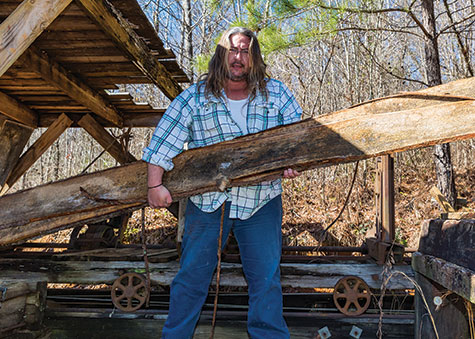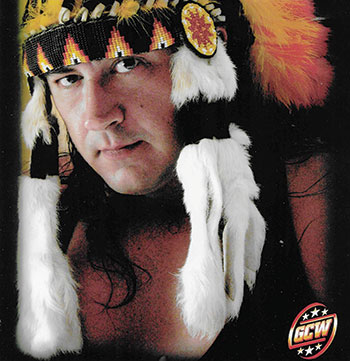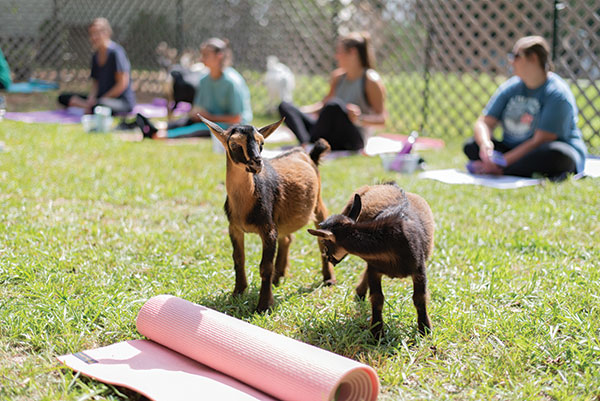
Goat Yoga more than just a craze for Springville couple and their farm
Story by Carol Pappas
Photos by Kelsey Bain
Make the turn off Springville’s Shanghai Road into CareDan Farm and it’s as if you have entered a magical world where animals rule, and the rest of us are lucky enough to be part if it – if only for a day.
The gang’s all there: Nigerian Dwarf goats Charlotte, Rose, Rosebud, twins Spur and Kid Rock and two new babies, Peanut and Cashew. There’s Rooster and Daisy, the horses, of course, and a lovable pig named Pancake. Talk about free range, the chickens meander around these parts to their hearts’ content while ducks splash playfully in a nearby puddle.
It’s just another day at the farm for them, but for those arriving by the carload, it’s an experience they won’t soon forget.
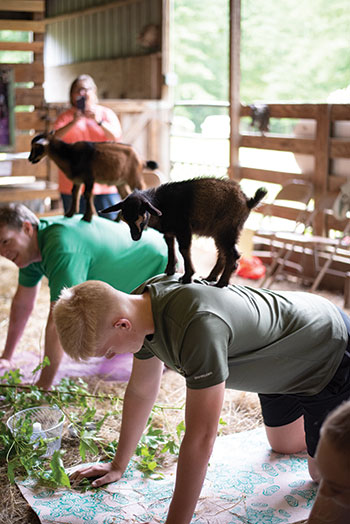
And that’s precisely the point, say Danny and Caren Davidson, who open up their Springville farm to young and old, friends, family and strangers from near and far, curious about a thing called goat yoga.
“It’s fun when people come out and do things they don’t typically do,” says Caren, who calls their fledgling business, My Farm Day, the perfect moniker, adds Danny. “Whether it’s fishing, riding horses, playing with the goats, we wanted people to have a ‘my farm day’ for them.”
Their first venture in providing that personalized farm experience is a craze sweeping the country, goat yoga. And on a summer Saturday morning, the rain didn’t seem to dampen the spirit of the day. Quite the opposite. Guests headed to the barn for shelter, where yoga mats and a menagerie of four-legged hosts awaited.
Certified yoga instructor Nancy Hunter of Springville explains her foray into today’s goat variety of this ancient practice. Caren had seen a post on Facebook about Nancy’s Yoga classes in Springville and at her studio in Oneonta.
Caren called and asked if she would be interested in teaching Yoga with goats, and Nancy said ‘Yes, I’m game. I’ll try it.’

“Caren is so amazing,” Nancy says. “These are her children,” she adds, motioning to the goats – old and new – the horses nearby, the baby chicks just introduced into the class (much to the delight of its students) and a host of other animals making up the zoo-like atmosphere.
In the beginning …
It wasn’t always like this – a farm couple just working and sharing the land. They were from the big city.
But her grandparents had a farm in Tennessee when she was growing up. “I fell in love with the farm and the animals.” Charlotte, one of the goats, is named for her grandmother.
Danny and Caren grew up in Vestavia Hills and graduated from Vestavia High, dated at Ole Miss and married.
He served in the Army in San Antonio for a few years, and they moved back to Alabama when he finished service.
They bought property across from Matthews Manor and lived there for nine years in Argo. “I love to be outdoors,” Caren says. “He loves to build stuff. We moved in with some dogs and within a year, we added horses and a couple of more dogs. Our dream was more land and more animals.”
They found what they were looking for – the house with 69 acres bordering Little Canoe Creek – in Springville. “When we pulled in the driveway, four chicks came running out to meet us,” Caren recalls. “I thought, ‘I’m sold. This is awesome.’”

“We bought a tractor and few other things, and that’s how we got here.”
By day, Danny is about to begin a new job teaching Algebra at Moody High School. Caren is director of human resources at a Birmingham law firm.
“Because we grew up in the city, we didn’t know much about farm life. Fortunately, we’ve had some great neighbors and friends who have taught us a lot about barn and fence building, drainage, pond maintenance, etc.,” Caren explains.
“What we didn’t learn from them, we learned from books or YouTube. Our master shower is frequently turned into an infirmary for injured chickens and ducks. We continue to learn most everything the hard way, but because it’s just the two of us, we have a lot of fun living the ‘farm life,’ which is a big departure from our ‘regular life.’”
The Davidsons don’t have children, but they have a very close family with lots of cousins, nieces, nephews who enjoy ‘Farm Days’ at Uncle Danny and Aunt Caren’s farm, hence the name, CareDan Farm. “Farm Days,” she says, “consist of riding horses, playing in the creek, fishing, gathering eggs from the coop, riding 4-wheelers, Gator rides, canoeing, hitting floating golf balls into the pond and whatever other activities Danny dreams up. Evenings on the farm generally involve more fishing, campfires, watching football and listening to music on the back porch.”
On the farm, Danny’s job at first was that of goat wrangler. He is self-proclaimed “head goat wrangler,” and has a name tag to prove it.
He’s the one always bringing home the goats. She’s more practical. The night before this class, he brought home two more without telling her. But she couldn’t resist, it was easy to see, as she held them like babies, bottle fed them and sported a never-ending smile as they frolicked among the yoga guests in the barn.
The driving force
The genesis of this day, where smiles, laughter and squeals of excitement are quickly becoming tradition, came from an unlikely source – a tragedy involving Caren’s father, Dr. Cary Petry. He had suffered from depression and anxiety for years and sadly took his own life in 2017.
“The couple of years leading up to that event were quite stressful, as I tried to provide my dad with encouragement, support and different treatment options. After his death, I found myself just going through the motions most weeks. I’d spend all my energy during the week trying to do my job, and I’d use the weekends on our farm for quiet time in hopes of recharging for the next week. Being outdoors, surrounded by all of God’s amazing creations, was the medicine I needed, but it was still just a repetitious cycle week after week.”
On a Sunday morning a year ago, her mother called as Danny and Caren were walking out the door to church. “She told me to turn on the news because there was a story coming on about a lady in Oregon who held goat yoga classes on her farm. I watched the story and couldn’t stop thinking about the satisfaction she had gained by sharing her farm and love for goats with others. I wondered if I could regain some happiness, and perhaps help others, by sharing my farm and animals with others.”
When she took the next step and called Nancy, “Surprisingly, Nancy had actually participated in a goat yoga class and was eager to try teaching one. So, for my 46th birthday, I invited a few close friends and family to attend a goat yoga birthday party at the farm. I figured they wouldn’t turn me down since it was my birthday. I had never done yoga before, but I was excited to combine so many things I love into one activity – friends, family, animals, outdoors and some much-needed exercise.
“The goats kept escaping the temporary fence we had hastily put up and didn’t seem too interested in the yoga, but it was fun nonetheless.”
They experimented with two more classes that fall before deciding to get serious about it. “Well, as serious as you can get about goat yoga,” Caren adds. “I felt like goat yoga was the perfect way for me to share our farm with other people who may be in need of some laughter and a break from their stressful lives.”
Where there’s a will …
“In January 2019, our two goat mommas, Charlotte and Rose, had three kids: Spur, Kid Rock and Rosebud. And in March, My Farm Day hosted its first official goat yoga class with our five goats. Since then, we’ve had classes nearly every Saturday morning.” Classes are limited to 12 people because the goat to human ratio is critical to participant’s enjoyment of the activity.
With the emotions of her father’s passing still fresh, “I got excited about it. It was something we could focus on and find a way to let other people enjoy the farm. It’s a different concept. It’s silly. It lets you forget about all your troubles for a while. Life is tough. If you can take a few minutes to do something you don’t always do, that’s fun.”
She talks of mental health issues as an epidemic facing the country and sees the farm as a means of coping. “It’s hard to get the help you need. I want to help people laugh. That makes me happy.”
The years leading up to her father’s death “were really rough for us. Every weekend, I would be here and recharge. It made me feel better to be with the animals.”
Her father was an animal lover and when he was at the farm with his dog, Rowdy, his rare smile would appear and is a memory she savors. It is also a memory that sparked the adventure Caren and Danny are now on. And Rowdy now acts as greeter, escorting guests up and down the drive.
What’s in a name
They decided to name the business “My Farm Day” with the idea that “everyone needed ‘their’ day on the farm, just like when we had family out for impromptu farm days. We figured we’d start My Farm Day with a little goat yoga, and maybe later, expand it to include other activities like fly-fishing lessons, barnyard parties, etc.,” she explains.
Goat yoga is the first real leg of that journey. And so far, the reviews have visitors coming back for more.
As the class gets under way on this particular Saturday, Caren and Danny place the newest baby goats on the backs of the participants who could hardly stifle non-stop giggles with the little ones prancing around, eventually leaping off as if the back were a high dive.
The newest goat crew will make their debut in yoga class in a few months. They are partial to crawling atop a human back or two or across their stomach as they lie motionless except for the full body stretch they are attempting.
“The older goats now are like teenagers. They have a mind of their own,” Danny said as the older goats wandered around the yoga class, going underneath, over and around outstretched bodies, occasionally pausing for a snack of hedges and vines nearby. Most did manage a snuggle or two with their human guests, enticing more than a few pets, hugs and rubs behind the ear from them.
One family arrived as part of a surprise for Jimmy Waldrop for Father’s Day. “He loves goats, but we live in the city limits (of Hueytown), and we can’t have them,” said Waldrop’s wife, Dana. He had mentioned he wanted to start yoga, and when she saw My Farm Day’s goat yoga, “it was perfect.”
Waldrop, a nurse at UAB, enjoyed his Father’s Day surprise outing. “I like getting out in a farm atmosphere, and I like goats. I don’t know why, I just do.”
Lana Clayton of Ashville is a return guest. “I fell in love with it, and I came back again and again.”
Farm living is the life for them
“Danny and I have had so much fun and met so many wonderful people during goat yoga classes. We love it because it allows us to spend time outdoors together, with our animals, while sharing our love of nature with others,” Caren concludes.
“People who don’t typically interact with farm animals, get a small dose of farm life, while getting in some terrific stretching and exercise. Nancy loves teaching the class because it introduces yoga to people who may not otherwise try a yoga class in a traditional setting.”
Participants are encouraged to laugh and take pictures throughout class. “As we say, ‘It’s a little bit of yoga and a whole lot of goat.’”
After class Caren and Danny help people pose for pictures with the goats. “Sometimes we have chickens join the class, and our pig, Pancake, has been known to shove her way in to the ‘yoga studio’ for a little attention. Every class is different, so it’s fun ‘work’ for us.”
Underneath a sign that appropriately says, Attitude is everything. Pick a good one, a table of wares displays Caren-designed goat yoga t-shirts and hats. Even the fresh eggs they sell have their own stamp on it – Laid With Love – a creation by Danny.
“But it’s not about making money,” Caren says, “it’s about giving people an experience that’s a break from ‘normal’ life.” As one participant told her, “I found today that baby goats are the cure for nearly anything.”
So, what’s next for this farm-loving, farm-sharing couple? “It is our goal to later, when we retire, use our farm in ways to help people who are hurting,” Caren said. “Goat yoga is just our first baby step.”
Editor’s note: More information about the farm and goat yoga is at myfarmday.com.














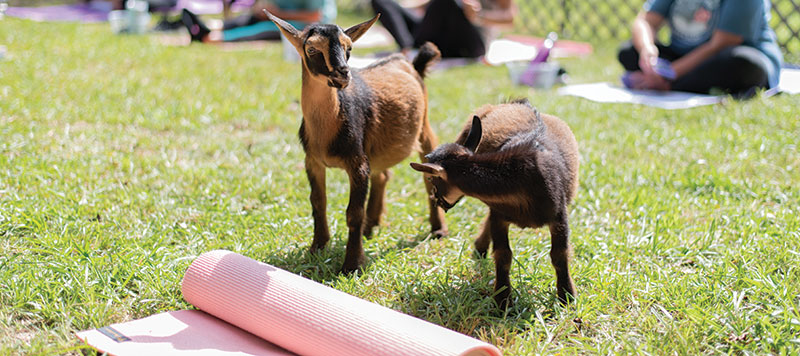
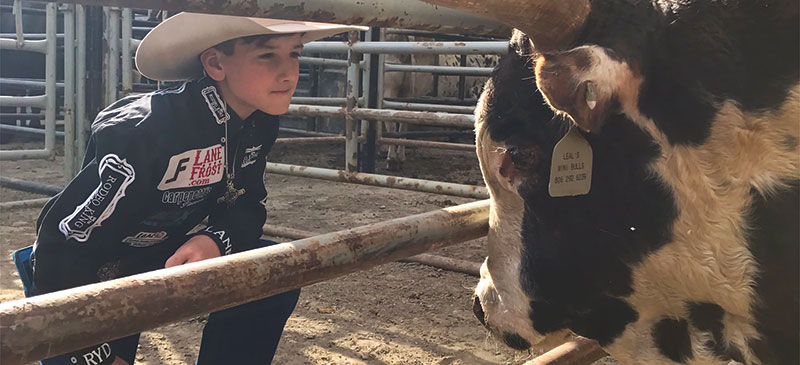

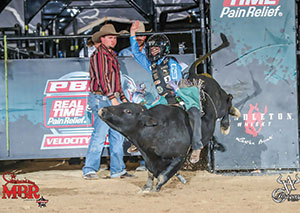 Once his protective gear is on – a helmet and vest mandated by the MBR (Mini Bull Riders Association) – he’s unflappable.
Once his protective gear is on – a helmet and vest mandated by the MBR (Mini Bull Riders Association) – he’s unflappable. At only 12, Carpenetti has drawn comparisons to the late Lane Frost. Frost, who won the Professional Rodeo Cowboys Association (PRCA) Bull Riding World Championship in 1987 when he was just 24, was killed in the arena in 1989. To this day, long after his death, Frost casts an almost mythic shadow over the sport.
At only 12, Carpenetti has drawn comparisons to the late Lane Frost. Frost, who won the Professional Rodeo Cowboys Association (PRCA) Bull Riding World Championship in 1987 when he was just 24, was killed in the arena in 1989. To this day, long after his death, Frost casts an almost mythic shadow over the sport.

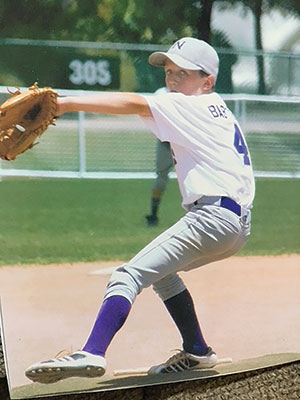 When he was 7, Mize made an announcement to his Mom, Rhonda, that he was going to go to Auburn and play baseball when he grew up.
When he was 7, Mize made an announcement to his Mom, Rhonda, that he was going to go to Auburn and play baseball when he grew up.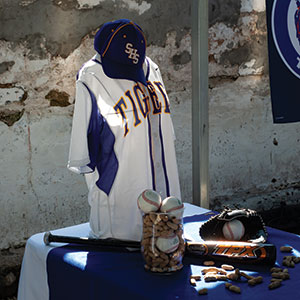 “He’s so advanced. What makes him advanced is that he commands his better than Olson did. I played with Olson in Baltimore and I played against Tim Hudson. This kid to me is even better. Olson had two pitches; Hudson had three. This kid has four quality pitches. And what I like about him, too, is that he calls his own game. He’s studying hitters already. He’s got a big-league approach already, and he has a big-league workout between starts, too.”
“He’s so advanced. What makes him advanced is that he commands his better than Olson did. I played with Olson in Baltimore and I played against Tim Hudson. This kid to me is even better. Olson had two pitches; Hudson had three. This kid has four quality pitches. And what I like about him, too, is that he calls his own game. He’s studying hitters already. He’s got a big-league approach already, and he has a big-league workout between starts, too.”

 And looking back, some call it “amazing,” others compare it to a fairy tale. But Tonya Tice Peoples, who came to Pell City from Lawrence County when her Dad, Mike Tice, became Pell City’s head football coach and hired Slater as the girls’ hoops coach, puts it more simply:
And looking back, some call it “amazing,” others compare it to a fairy tale. But Tonya Tice Peoples, who came to Pell City from Lawrence County when her Dad, Mike Tice, became Pell City’s head football coach and hired Slater as the girls’ hoops coach, puts it more simply: Like Slater, Tonya Tice Peoples became a teacher and coach. After working in NASCAR, Danielle Fields Frye is director of community engagement for the United States Auto Club (USAC) and lives with her husband and two daughters outside Indianapolis. Melissa Purvis McClain is an engineer. Erica Collins Johnson, like McClain, is still in Pell City. Alicia Moss Ogletree and Kathy Vaughn – a distinguished military veteran — are still in the area as well. April Hughes is in the fashion industry in New York.
Like Slater, Tonya Tice Peoples became a teacher and coach. After working in NASCAR, Danielle Fields Frye is director of community engagement for the United States Auto Club (USAC) and lives with her husband and two daughters outside Indianapolis. Melissa Purvis McClain is an engineer. Erica Collins Johnson, like McClain, is still in Pell City. Alicia Moss Ogletree and Kathy Vaughn – a distinguished military veteran — are still in the area as well. April Hughes is in the fashion industry in New York.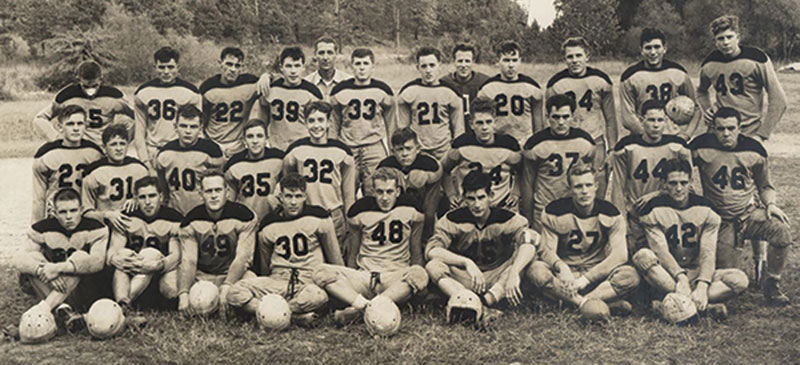
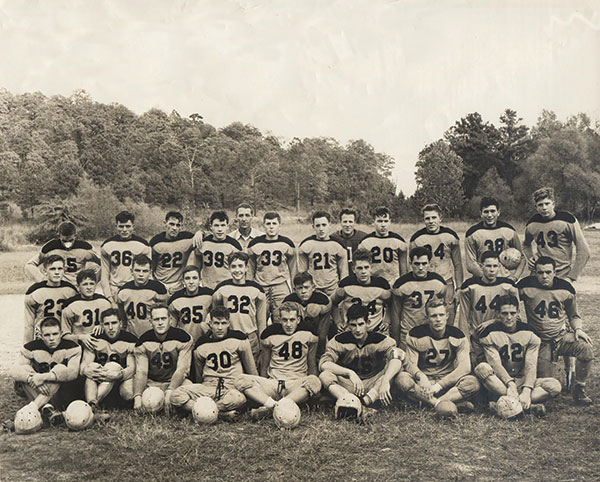
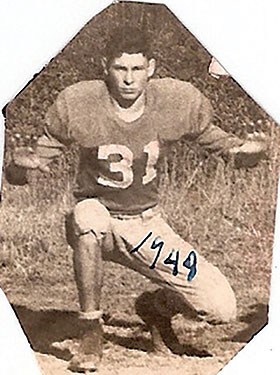
 When he talks about Panther football’s impact, Gulledge’s voice cracks with emotion.
When he talks about Panther football’s impact, Gulledge’s voice cracks with emotion.